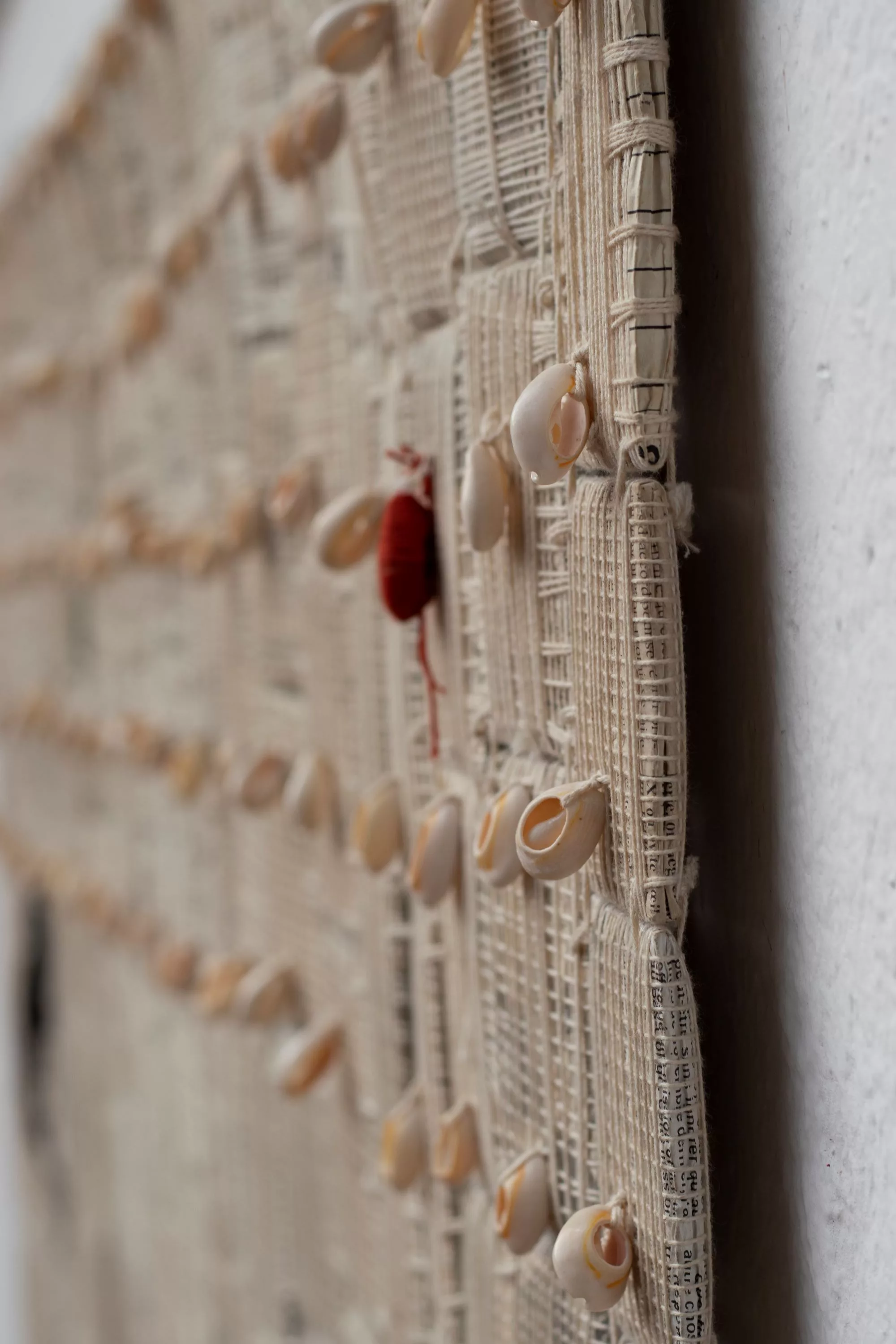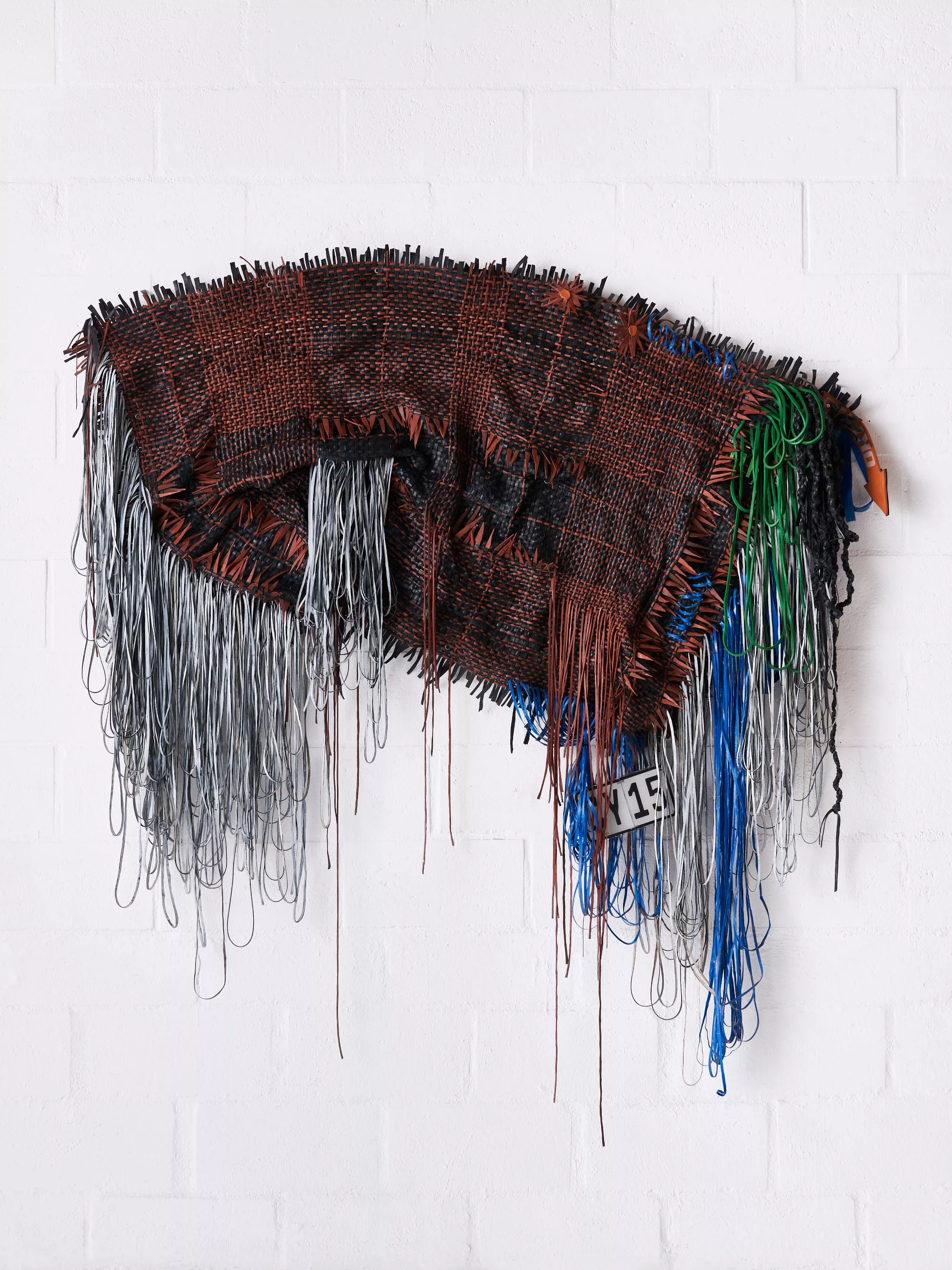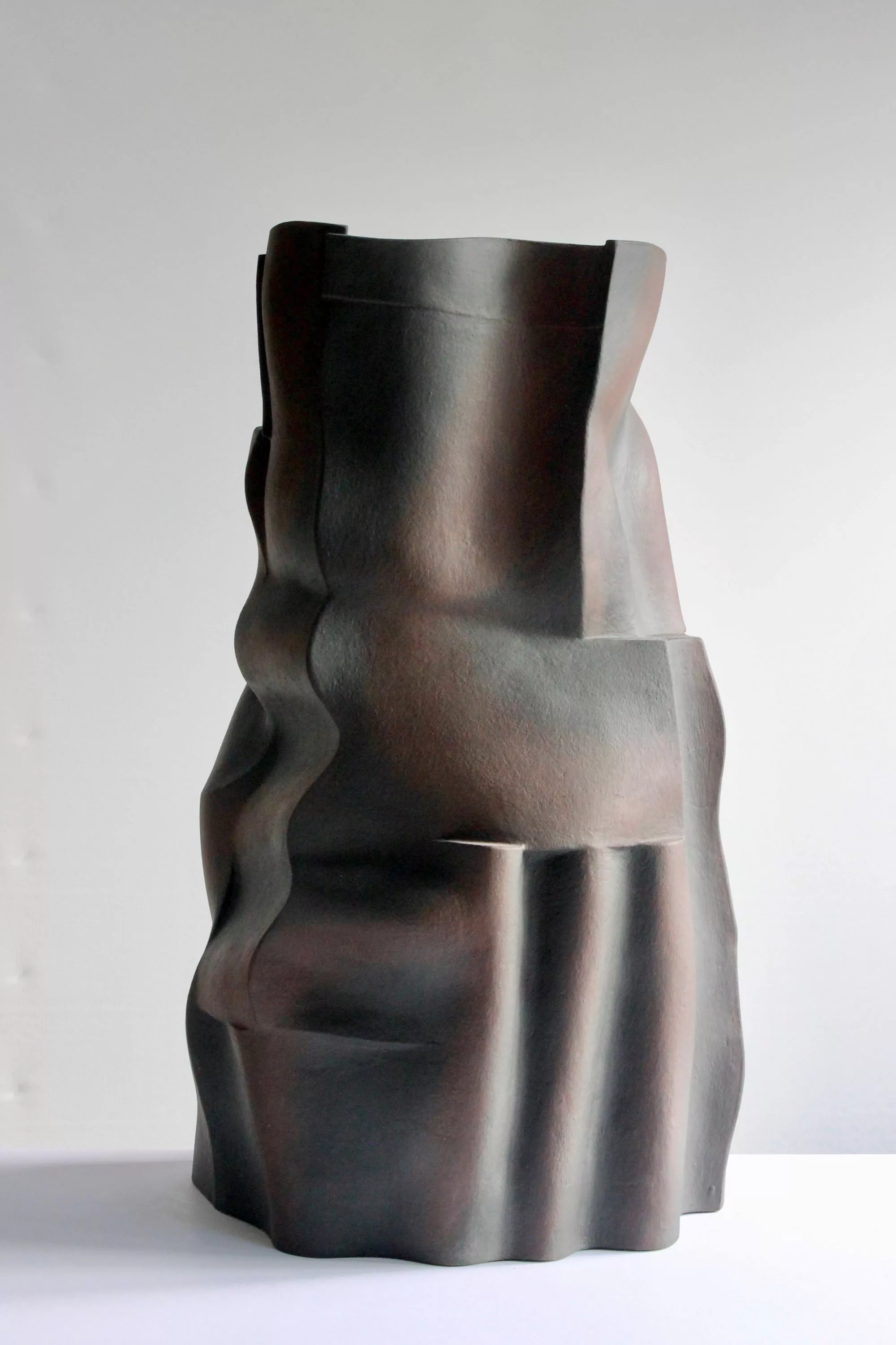
When T.S. Eliot first wrote that “anxiety is the handmaiden of creativity”, I am sure that even he may have struggled to conceive it as being a kindred spirit to Loewe’s Foundation Craft Prize, where various protagonists, including Andrés Anza (Mexico), Hiroshi Kaneyasu (Japan), and Ozioma Onuzulike (Nigeria) have formed stories of their own. Before their hands crafted them into being, albeit not with a pen, but through the employment and manipulation of various corporeal elements which were sculpted, woven, thrown and everything in-between, in a concentrated, perhaps unintentional effort to demonstrate that this part of our anatomy isn’t potent because they immortalise the life in which we live, but more so because they endeavour to enshrine our reminiscence of it, perhaps getting cut, scraped, and blistered in the process. “Crafts began as a way of life at the beginning of human existence and have changed over time, so it is also a lifestyle and a way of living for the creators in their pursuit of craftsmanship. The perception of crafts may differ from country to country, but even though the world has changed so much, one thing that has not changed in handicrafts is the unique background of handmade crafts: there are materials, there is a collaborative process of how we use our hands to work with them, and the techniques and processes have been cultivated” points out one of it’s 30 shortlisted participants, Aya Oki. “Today, countless things are produced by machines for convenience and benefit, yet it is still true that in today’s world, there are traditional crafts, arts and crafts, industrial crafts, contemporary crafts, and even DIY, where there is a need to pass on culture and to be creative. Crafts definitely give us a passion for making things and make us aware of their importance.”
“Today, countless things are produced by machines for convenience and benefit, yet it is still true that in today’s world, there are traditional crafts, arts and crafts, industrial crafts, contemporary crafts, and even DIY, where there is a need to pass on culture and to be creative.” – Aya Oki.
Unintentional or not, it’s this viewpoint that holds this project all together in its hands before outstretching it to the observer through corporal perspectives that embody the lives of those who inwardly contemplated and then outwardly realised them, whether they sought ingenuity from natural expression and transformation, a set of inward abstractions or the generation of the observer’s curiosity. Predictably, every road, or perhaps more appropriately, vein, in this circumstance, flows back to the Foundation Craft Prize’s seemingly governing belief of reflection as a conduit of progression; Saar Scheerlings’ sculptural project, for instance, whilst being her “first piece of a big scale”, as pointed out to us by the artist, also originates from a sentiment of there being a “universal cultural energy” passed to us by those who came before, from who she continues to seek ingenuity in the present. “The very first textile sculpture I made was built with an old garden cushion that I cut up, that I covered with little pieces of leftover fabric, bound together because, well, it had to find a construction somehow, and it became a sort of 3d weaving, and it was based on a collage that I made out of the shape of a cardboard tea box that I found in the bin” she voices. “I’ve tried to pick fabrics in a shop, but it didn’t make sense to me. I couldn’t decide; there was too much to choose from! So I like to be limited by whatever I find in a thrift store or in markets in the French countryside where I live. Like the antique French linens I used in the piece. I love how it enables me to be curious and playful, and it creates outcomes that surprise me and which I might have never thought of before.”” “Every material or shape is an opportunity for creation” she concludes.” I collect, transform and take apart existing crafts like ingredients for new recipes. ‘The Column’ is the most recent step in this evolutionary process, incorporating coincidences and randomness along the way. My work is not only an accumulation of layers of foam. It’s also these layers of hands from history that are all part of the work. Through the antique linens: the flax-farmers, spinners, weavers, and more broadly the knowledge that’s indirectly there of rope making, needlework/sewing, knotting.”

That’s not to say that the Loewe Foundation begins nor ends entirely within the borders that encompass the Palais de Tokyo; on the contrary, it makes a point of arguing that whilst borders may contain us, they are merely a springboard for artistry, Weon Rhee’s Primitive Structures (Botanical) being one of the many cases in point. “It reflects my personal narrative on aesthetics and considers the past of Korean society and culture where I was born and raised,” he says to Elephant. “The aesthetic sensitivity I possess today is observed from the microscopic realm that has existed since ancient times. (Insect eyes, leaf veins) 70% of the world’s dolmens are found in South Korea. These dolmens are adjacent to nature, where such microscopic elements can be observed.”
“My work has always been like a conversation, a communion with the material, because it is a silent work and many hours.” – Andrés Anza.
Embracing a homogenous modus operandi to this, Ange Dakouo’s project, which had been choreographed through the manoeuvring of “aesthetics and conceptual relevance”, also dips its hands into eliciting sentimental and psychological considerations from observers whilst navigating universal conceptualisations and provoking inward, individual reflections. Joining him in the latter goal, Ken Eastman explains, “The work I make is the life I’ve led, and results from the experience of that life. ‘Don’t get around much anymore’ is the shape of how it felt to me to live where I live in the world, right now- that’s what it looks like to me.”

“My work has always been like a conversation, a communion with the material, because it is a silent work and many hours” says Andres Anza, bolstering this perspective, that craft projects are created by us to the same degree that we are sustained through them., whilst also contributing his handprint to it through a presentation of clay sculptures. “It allows me to meditate, reflect and have that relationship with the construction of the work and the clay. I like to think that in each work, something of those moments, thoughts and reflections are deposited, that remains inside the work that is hollow; sometimes, I even leave a peephole in the sculptures to be able to see a little inward, even if not completely. The intention of this is because I believe that the relationship that the viewer will have with the work is like the personal relationships that we have. We can study and know ourselves physically and superficially, but little by little, we will get to know ourselves by doing within ourselves.”
“My initial idea has been to preserve my experiences and memories which don’t have solid forms. It is a conflicting attempt because those things are beautiful because of the transient and fleeting existence.” – Miki Asai.
Adopting a familiar approach to her contemporary, particularly when it concerns the corporality of the body in comparison to the intangibility of the mind, Miki Asai explains, “My initial idea has been to preserve my experiences and memories which don’t have solid forms. It is a conflicting attempt because those things are beautiful because of the transient and fleeting existence.”

The question of whether there’s a place for glass-blowing or metal-bending in every facet of their good, bad and ugly glory is pertinent, even more so because design, along with technology, is only becoming ever more symbiotic; I mean, didn’t we just see Refik Anadol’s introduction of Echoes of the Earth: Living Archive at the Serpentine Gallery? Or Ai Weiwei go head-to-head with AI by asking the programme questions over 81 days in reflection of the period he was impeded inside a Chinese prison with each contemplating our position in a continuously transmogrifying macrocosm surrounded by international uncertainty and progressing digital possibilities? (Spoiler alert) the diegesis, as narrated by Sotheby’s Institute of Art, is only set to thicken in the next 10 years, with ‘digital self-determination’, ‘non-fungible tokens’,’ interactive holography’ and ‘augmented reality’ contributing their fair share to an already overflowing magnum opus. “Craft was a necessity, and now it’s something we have to choose for in order to have it in our lives”, points out Saar. “Since handmade objects cannot compete on an economic level with industrially produced objects, their value becomes about something else: whether that’s human connection and expression or excellence in skill and innovation. At the same time, though, I can appreciate industrially produced objects in almost the same way. I’m thinking about the Bauhaus movement for example. It’s still about human-made things, just with the use of tools that have become more and more complex and inaccessible. To me, being able to make things with my hands makes me feel like I can build my own world and at the same time be in relation to all this know-how from people before us; it gives a sense of belonging.” “In contemporary crafts, I believe that it is necessary to move towards a single expression through at least three elements: the idea of the material, the idea of the technique and the idea of the form” reiterates Kazuhiro Toyama. Grayson Perry, too, crafted his “are computers killing off craft? Not a chance” treatise; by firstly recognising that, yes, “the results of digital production often have a lifeless feeling”, but with a few tweaks here and there, as one may do when they’re adjusting the temperature of their kiln, digital technology holds the possibility to offer “the craftsman and the artist creative opportunities that were previously too expensive for an individual, too time-consuming or just plain impossible.” The former declaration in particular, carries a lot of weight, singularly as a research journal previously developed by the British Sociological Foundation in 2022, found that people belonging to higher middle-classes were four times more likely to be in a creative profession in comparison to their working-class counterparts. Whether this continues to voice itself more decisively than sociologist Ernest van den Haag’s contention that, upon the emergence and expansion of the industrial revolution, “museums became shelters for the art of the past. Art became homeless – a commodity, not a personal relationship and alienated from the surrounding reality” remains to be seen. Fortunately, we won’t have to wait as long to visit the prize’s accompanying exhibition, which opens doors to observers from 15th May to 9th June 2024.
“My work is not only an accumulation of layers of foam. It’s also these layers of hands from history that are all part of the work.” – Saar Scheerlings.
For now, at least, Loewe seems to not have spoken but instead screamed for itself, with everything from metal jewellery to woven baskets contributing their hand gestures in its aspiration to realise “the elevation and transformation of the everyday.” Similarly to his contemporaries, Patrick Bongoy, whose contribution to this project endeavours to “create a dialogue”, affirms that “there is always room for growth in the creative realm, and that’s the driving force in craftsmanship. Seeing the shortlisted artists’ works, I’m deeply humbled and inspired to do better in my own work,” he concludes.
Written by Sabrina Roman





